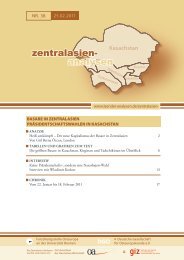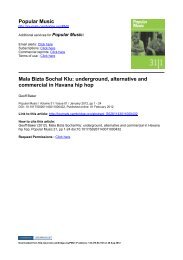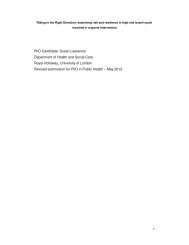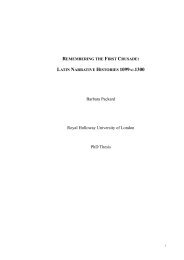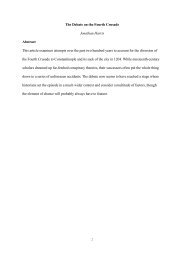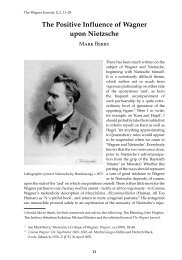Dynamic Capabilities: A Review and Research Agenda
Dynamic Capabilities: A Review and Research Agenda
Dynamic Capabilities: A Review and Research Agenda
You also want an ePaper? Increase the reach of your titles
YUMPU automatically turns print PDFs into web optimized ePapers that Google loves.
a high level of knowledge <strong>and</strong> skills in areas relevant to applying the new technology<br />
(Woiceshyn <strong>and</strong> Daellenbach 2005). Other empirical studies (e.g. Verona <strong>and</strong> Ravasi<br />
2003; Salvato 2003; George 2005) also reveal that firms’ ability to acquire external,<br />
new knowledge, assimilate it with existing, internal knowledge <strong>and</strong> create new<br />
knowledge is an important factor of dynamic capabilities in several industries (see<br />
Appendix 1). The higher a firm demonstrates its absorptive capability, the more it<br />
exhibits dynamic capabilities.<br />
A significant number of prior studies use R&D (research <strong>and</strong> development)<br />
intensity (defined as R&D expenditure divided by sales) as a proxy to absorptive<br />
capability (e.g. Tsai 2001). Other studies (e.g. Chen 2004) use multiple indicators to<br />
measure the extent of the firm’s ability to assimilate <strong>and</strong> replicate new knowledge<br />
gained from external sources. Zahra <strong>and</strong> George (2002) reckon that absorptive<br />
capability is a multi-dimensional construct <strong>and</strong> propose four component factors of the<br />
absorptive capability construct: knowledge acquisition, assimilation, transformation <strong>and</strong><br />
exploitation. However, empirical studies have not developed <strong>and</strong> validated a multi-<br />
dimensional construct of absorptive capability.<br />
Innovative capability<br />
Innovative capability refers to a firm’s ability to develop new products <strong>and</strong>/or markets,<br />
through aligning strategic innovative orientation with innovative behaviours <strong>and</strong><br />
processes (Wang <strong>and</strong> Ahmed 2004). As indicated in the definition, innovative capability<br />
encompasses several dimensions. Prior research has emphasised different combinations<br />
of these dimensions. For example, Schumpeter (1934) suggests a range of possible<br />
innovative alternatives, namely developing new products or services, developing new<br />
16




